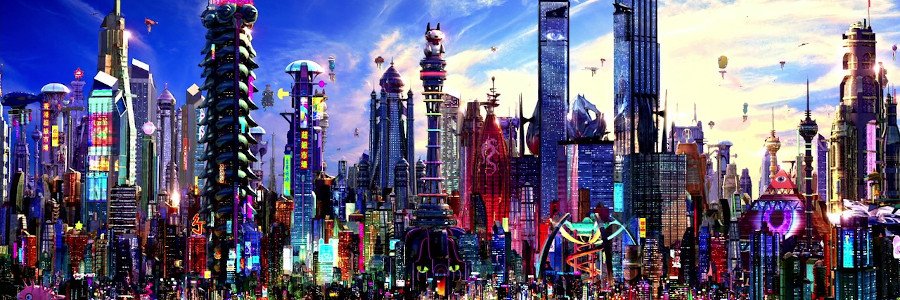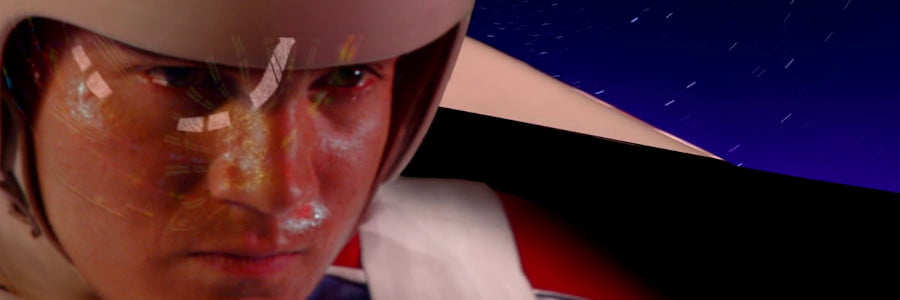In 1999, The Matrix came out. Then I blinked, and it was 2008, and Speed Racer came out. And I, despite being a grown adult, looked at these two works, as advertised, and asked myself: How the fuck did these things come from the same people?

Turns out that that’s an incredibly stupid question.
Speed Racer (2008) is a live-action movie based on the 1966 manga Mach GoGoGo, which ran for two years, and then got an anime, and then got dubbed and shared internationally. It’s that kind of vintage, it’s an anime that was being shared around so early, and before so many of the visual tropes of modern anime ever happened. Like, this anime predates harem anime. The first proto-harem narrative, Rumiko Takahashi’s Urusei Yatsura, didn’t come out until 1978. Speed Racer is an anime that was how people thought of anime until, well, the 1990s. Speed Racer is probably the metaphorical ‘your dad’s favourite anime.’
Not my dad.
My dad’s favourite anime is Tobor: The 8 Man.
Anyway, Speed Racer is a longstanding anime about a hero named Speed Racer, which is objectively an amazing name, who let’s say, goes on adventure and beats baddies as expressed throughout the only material metaphor of finding ways to make beating those baddies in the form of races. I say that as someone who has never watched any Speed Racer, or its multiple reboots, or its video games, or its crossovers, but that’s okay, I don’t need to — because this is not a movie about the story that Speed Racer tells.
This is a movie about the way that watching Speed Racer feels.

Okay, what’s the movie about? It’s about Speed Racer, a boy who races really well, and how he races to defeat the corrupt conglomerate of evil race companies.
Er… wait, that can’t literally be the plot, right?
… no, that… that really is it.
Look I’ve talked in the past about plot and narrative and how they’re not the same thing. The plot is the sequence of events that the fiction accords; the narrative is the sequence of how you, the audience, become aware of that sequence. In the same way the plot of this movie can be ‘boy beats corporation by racing fast,’ that plot is as simple as it is just because this story is kind of built around five distinct episodes that flow together. The cast is sizeable — just in the basic ‘these characters will show up a lot and you need to know who they are’ there’s Speed Racer, his parents, his little brother, his girlfriend, the guy he thinks might be his long-lost brother, the evil corporate executive who wants to control him, the gang of criminals hired by that executive, the family’s mechanic, and the family’s pet chimpanzee.
You get to see four or five races, depending on how you measure them, which aren’t anything like real races, but are instead full of cool things like swinging orbs and giants spikes and narrow mountain paths and people just straight up pulling out guns. There’s cars that are destroyed and upgraded, there’s betrayal and there’s success and there’s a tragic twist to a heroic sacrifice while the ending is pretty much almost everything you want with the promise of ongoing story and adventures to come.
It’s two hours of worldbuilding, high speed action, at least one ninja beatdown, organised crime, corrupt capitalism and a villain who has mastered the art of sheer smarm and has a great time throwing out some fantastic villainous breakdown lines like STOP HIIIIIIM.

Look, nothing I can tell you is going to make you interested in Speed Racer if it wasn’t already something that piqued your interest when you looked at it. I’m not about to reveal some secret truth about the movie that will rewrite your assumptions and make you realise this movie you may have thought was meh is good, actually. The movie is more like something bulletproof and unassailable to start with: This movie is absolutely and unfailingly itself. You can dislike everything this movie is doing but you can’t, Inception style, pretend that it’s an accident. This movie looks the way it looks because they want it to look that way, and they did.
There’s an unreserved intentionality to it, and it’s also very pure. I said that Speed Racer is not a movie about the story that Speed Racer tells, but what is it then? I think, to describe this movie, the mindset that made this movie work for me, is that it’s a movie about how playing Speed Racer feels.
That feeling of being a little kid with some cars in your hands and running and driving them over surfaces and imagining the kind of story that those little cars in your hand would generate if they could interact with one another like they were the objects in your hands, moving as fast as they could. The whole story operates in the intersection between ‘dumb as fuck’ and ‘cool as hell,’ a region that I think of as the Marcus’ Bo Staff From Babylon 5 Zone.

I talk about how supporting queer art means supporting all kinds of queer art. That it’s not just about the sad or mournful tragedies, or the chaste queer romances. I talk about how just a story about a queer hero who goes on to save the day and beat the dragon is still a perfectly good story and worthy of consideration. This is a movie made by a pair of trans women and it’s just so joyful and preposterous all at once.
Speed Racer is a fun story, and the little kid popping up at the literal last minute to assert that he’s providing a content warning for cooties sensitive viewers should probably tell you the kind of movie it’s trying to be. Dislike what it is, but you can’t pretend for a moment it’s not entirely intending to be it.